Central Asia - Uzbekistan -Samarkand - Part 1
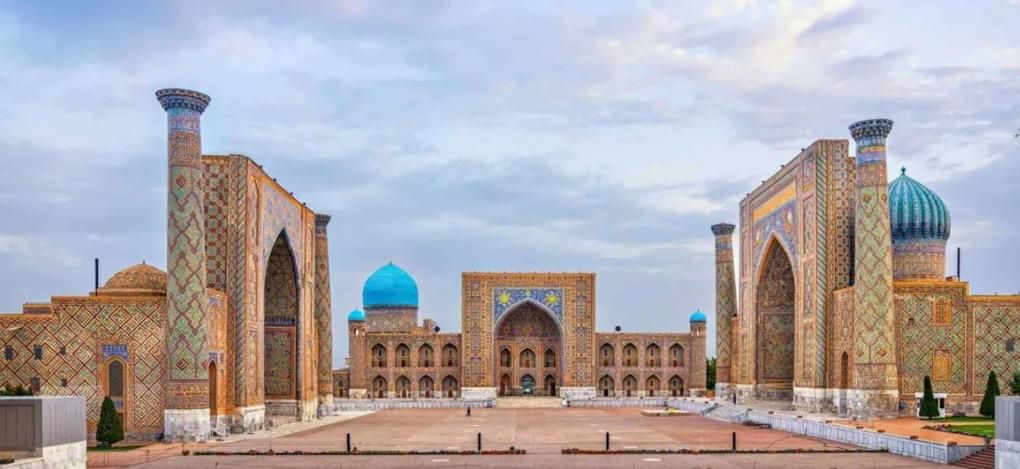
We travelled from Tashkent to Samarkand on a modern fast train service - a comfortable and relaxing 2½ hour journey. Poets and historians described Samarkand as The Pearl of the Eastern Muslim World and it’s easy to see why it’s listed as an UNESCO World Heritage - The Registan photo above, a prime example.


We visited Afrasiyab - the most ancient part of Samarkand and one of the largest archaeological sites in the world. In the nearby Museum, we learned from around 500BCE to 1220CE, Afrasiyab was under the rule of the Sogdians, an Iranian civilization that mastered the Silk Road trade - silks, cloths, spices, and precious metals, from as far as China and India.
Several cultures and religions found a home in Samarkand during the medieval times - Zoroastrianism (fire worshippers), Christianity, Buddhism, and Hinduism. In the 8th century, the Sogdians fled the region as the Samanid Empire took over, turning Samarkand into one of the major centres of Muslim learning before it was destroyed by Genghis Khan in 1220.
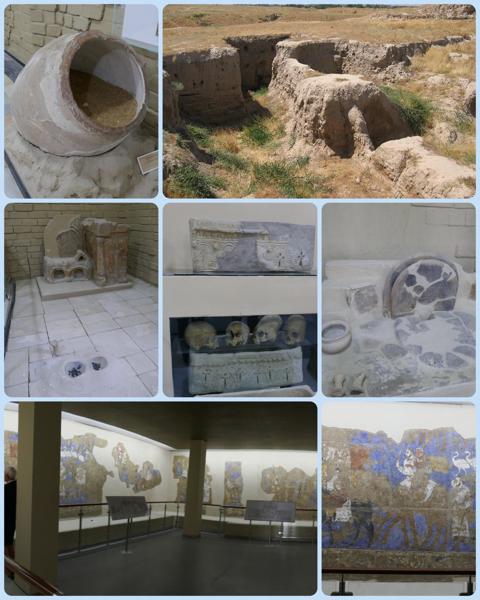
In the museum, as shown above, we viewed jars found during the excavations of the archaeological site, a Zoroastrian fire place, an ossuary which held bones of the dead and some of the skulls, other artefacts and wall paintings found dating from 7-8th century.
Much of the architecture around Samarkand today is credited to Amir Timur, who rebuilt Samarkand from scratch and made it the capital city of the Timurid Empire in the 1370s. His grandson Ulugh Beg succeeded him but became famous for a very different reason - more about him later.
In 1500CE, the Shaybanids (a Turko-Mongol dynasty) conquered Samarkand and merged the city with the Khanate of Bukhara. They built some of the most important monuments in the city today, including two of the madrasahs inside the famous Registan which we visited briefly at night and explored more fully by day.
By the late 18th century, Samarkand was abandoned and only revived with the construction of the railway system in the 1890s, which re-established the city as a trading hub at the intersection of the East and the West.
The Registan is the crown jewel of the city, as shown on the opening photo and again below, with three madrasahs (Islamic schools) framing a majestic square.
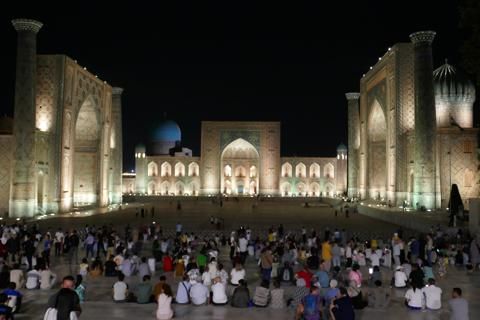
Tilya-Kori Madrasah, built between 1646–1660 by the Shaybanids, is in the centre where a beautiful courtyard surrounded by trees leads to the entrance of the Tilya-Kori Mosque - with a ceiling made of incredibly intricate gold mosaics, simply breathtaking.
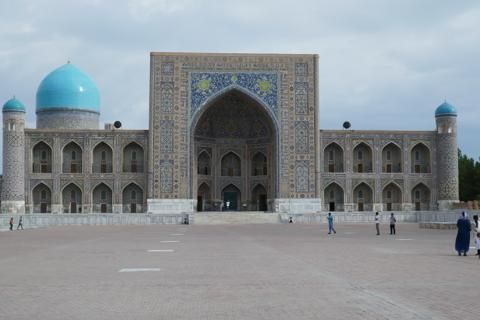
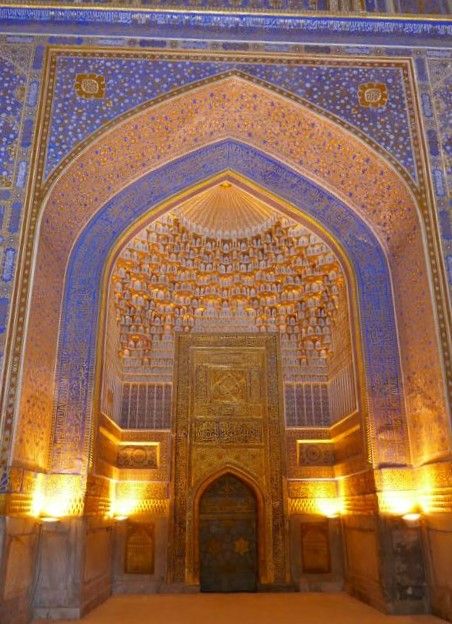
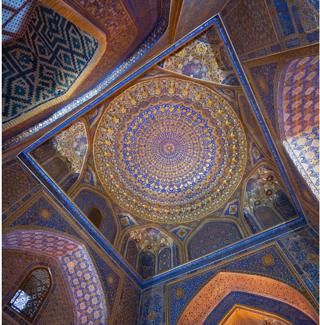
Then to the left, Ulugh Beg Madrasah, built between 1417–1420, during the Timurid Empire. From the very beginning, this Madrasah was the main religious institution of Samarkand - a unique university in the middle ages. 50 cells which served as dwellings for more than 100 students and along with theology, mathematics astronomy and philosophy were also taught.
To the right Sher-Dor Madrasah built between 1619–1636, again by the Shaybanids.
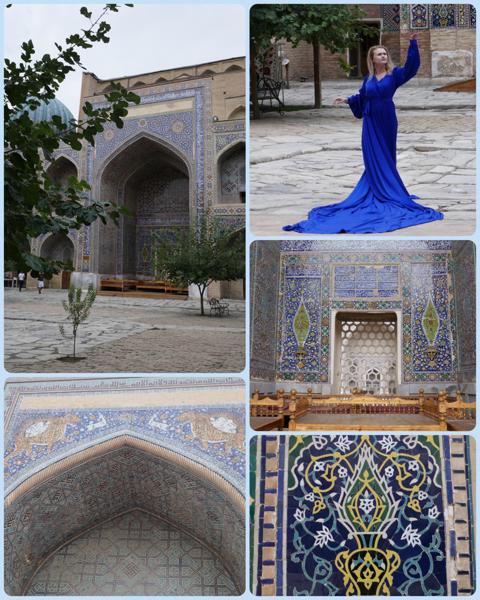
As shown above, along the top of the portal of Sher-Dor Madrasah - a pair of tigers (a face in a sunny oval above their backs) chase baby deer. Sher-dor means having tigers.
We constantly admired the fine majolica tiling and it was hard to miss a girl posing around the courtyard for her professional photographer.
Each madrasah housed two floors of classrooms and residential dorms for students and professors. Today, many of them have been turned into souvenir shops selling everything from suzanis (a traditional hand-embroidered textile) to intricate paintings.
I fell in love with a few paintings trimmed with silver and gold, but resisted the urge to purchase.
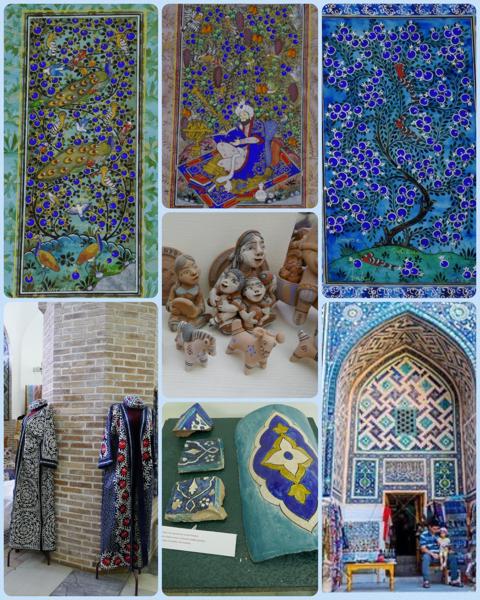
Under the rule of Ulugh Beg (grandson of Timur) during the Timurid Empire, Samarkand became a scientific hub. He captured my imagination, a genius becoming more famous as an astronomer than as a ruler and was a contemporary of Ptolemy, father of European astronomy.
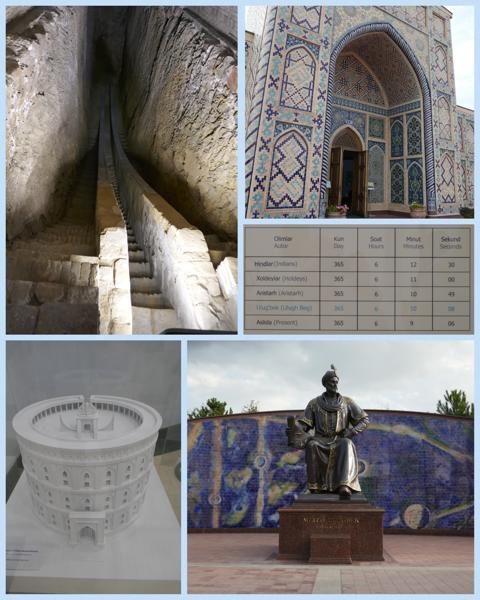
In the 1420s, he built the Ulugh Beg Observatory considered one of the best observatories in the Islamic world and nurtured top astronomers of the time. It was created 200 years before telescopes even existed.
Notable legacies include measuring the length of the year so accurately that their number falls within today’s acceptable tolerances (refer table in collage above, and again to the left below), as well as a star catalogue with over 1,000 stars and their locations in the sky.
Below to the right results of a study for yearly movements of the five bright planets known in the time of Ulugh Beg. The difference between Ulugh Beg’s data and that of modern times falls within the limits of two to five seconds. 1
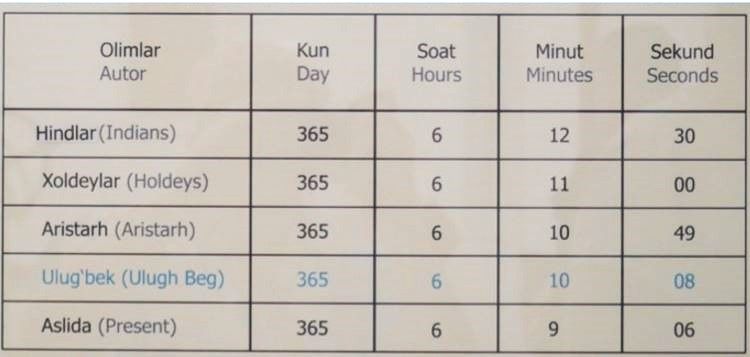
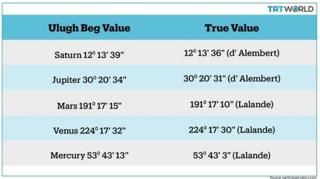
The main instrument to achieve these results was a monumental 40m stone meridian arc, now called the Fakhrī sextant, to measure the angle of elevation of bright celestial objects.It was over 40m long - today just 25m survives, as shown in the collage above
Unfortunately, his scientific endeavours and forward thinking which included teaching women, displeased some clergy and other conservatives which accused him of heresy and he was beheaded! It was a ruthless world back then!
The observatory was destroyed in 1449. Thankfully a Russian archaeologist rediscovered the observatory in 1908 and his amazing legacy is now recognised.
Tomorrow join me to continue exploring Samarkand.
Credits:
1 trtworld.com
